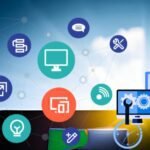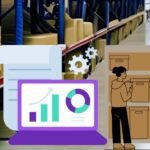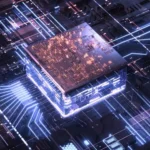Information Technology (IT) has revolutionized living, working, and interacting. It encompasses a wide range of technologies and applications that facilitate information storage, processing, and dissemination. This comprehensive exploration delves into IT’s fundamental principles, key components, significant benefits, challenges, and future trends, highlighting its transformative impact on modern society.
Understanding Information Technology
Information Technology uses computers, networks, and other electronic devices to store, process, and communicate information.
Definition and Scope of IT
It encompasses various domains such as software development, hardware engineering, network management, data storage, cybersecurity, etc. It involves creating, maintaining, and utilizing systems that handle information, making it an essential aspect of modern businesses and daily life.
Historical Evolution of IT
The evolution of IT can be traced back to the development of early computing machines in the mid-20th century. Over the decades, advancements in microprocessors, storage devices, and networking have significantly expanded IT’s capabilities and applications, leading to the interconnected, digital world we know today.
Importance of IT in Modern Society
It plays a crucial role in various sectors, including healthcare, education, finance, entertainment, and government. It drives innovation, enhances efficiency, and improves the quality of services, making it indispensable in today’s fast-paced, information-driven world.
Key Components of Information Technology
The core components of IT work together to create a robust and efficient information system.
Hardware
Hardware includes all the physical devices used in IT systems, such as computers, servers, networking equipment, and storage devices. These components provide the necessary infrastructure for running software applications and managing data.
Software
Software refers to the programs and applications that run on hardware devices. It includes operating systems, productivity tools, enterprise applications, and specialized software for various industries. Software development involves designing, coding, testing, and maintaining these applications.
Networks
Networks connect various hardware devices and enable communication and data exchange between them. These include local area networks (LANs), wide area networks (WANs), and the Internet. Network management involves ensuring connectivity, security, and performance of these networks.
Benefits of Information Technology
IT offers numerous benefits that enhance productivity, connectivity, and innovation across different sectors.
Increased Efficiency
IT systems automate routine tasks, streamline processes, and reduce human errors, increasing efficiency and productivity. It allows organizations to focus on strategic initiatives and improve their overall performance.
Enhanced Communication
IT enables seamless communication through email, instant messaging, video conferencing, and other digital channels. It facilitates collaboration across geographic boundaries, making it easier for teams to collaborate and share information in real-time.
Innovation and Growth
IT drives innovation by providing tools and platforms for developing new products and services. It supports research and development, data analysis, and creative processes, fostering growth and competitiveness in various industries.
Challenges in Information Technology
Despite its benefits, IT also presents several challenges that must be addressed for optimal performance and security.
Cybersecurity Threats
The increasing reliance on IT systems makes them a target for cyberattacks. Protecting sensitive data, ensuring network security, and preventing unauthorized access are critical challenges that require robust cybersecurity measures and continuous monitoring.
Rapid Technological Changes
The fast-paced nature of technological advancements in IT can be challenging to keep up with. Organizations must continuously update their systems, train their staff, and adapt to new technologies to stay competitive and efficient.
Data Management
Managing the vast amounts of data generated by IT systems can be overwhelming. Ensuring data accuracy, privacy, and regulation compliance are essential tasks requiring effective data management strategies and tools.
Future Trends in Information Technology
The future of IT is shaped by emerging trends and technologies that promise to enhance its capabilities and applications.
Artificial Intelligence and Machine Learning
AI and ML revolutionize IT by enabling systems to learn from data, make predictions, and automate complex tasks. These technologies are integrated into various applications, from customer service chatbots to advanced data analytics, driving innovation and efficiency.
Cloud Computing
Cloud computing transforms IT by providing scalable, on-demand access to computing resources. It enables organizations to store and process data in remote data centers, reducing the need for physical infrastructure and facilitating collaboration and remote work.
Internet of Things (IoT)
IoT connects physical devices to the internet, enabling them to collect and exchange data. This technology is driving the development of smart cities, industrial automation, and connected healthcare, expanding the scope and impact of IT.
Conclusion
Information Technology is a cornerstone of modern society, driving innovation, connectivity, and efficiency across various sectors. By understanding its principles, components, benefits, challenges, and future trends, organizations and individuals can harness the full potential of IT to achieve their goals and improve their quality of life. Despite challenges related to cybersecurity, technological changes, and data management, ongoing advancements and emerging trends promise to enhance the capabilities and applications of IT further, shaping a more connected and innovative future. As IT continues to evolve, it will remain a vital force in transforming how we live and work in the digital age.










